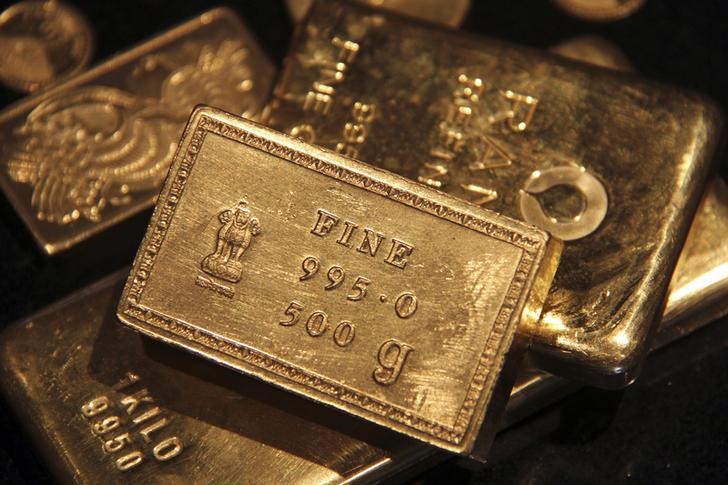Gold Dips Again Ahead of Fed, Stuck at Mid-$1,600s
2022.09.20 16:18
[ad_1]

© Reuters.
By Barani Krishnan
Investing.com — Gold prices were moored in mid-$1,600 territory, falling for a fifth time in six days and ahead of Wednesday’s interest by the Federal Reserve that’s likely to deliver a third straight substantial rate hike for the United States.
The rallied for a third time in four sessions, being the main catalyst for gold’s weakness, on bets that the Fed will raise rates by for a third time in a row when it meets Wednesday to rein in inflation.
The rate hike bets also weighed across risk assets on Tuesday, with Wall Street’s key stocks indexes from the to and all down more than 1% each.
The benchmark gold futures contract on New York’s Comex, , settled down $7.10, or 0.4%, at $1,671.10 per ounce.
Gold has lost some 4% over the past six sessions, remaining stuck in $1,600 territory. Its only rebound in that span was on Friday, where it gained 0.4% — that too after hitting a 2-½-year low of $1,669.05 first.
The , which is more closely followed than futures by some traders, has slid even more.
In Tuesday’s trade, spot gold was down $10.31, or 0.6%, to $1,665.46 by 15:40 ET (19:40 GMT). On Friday, it sank below $1,654, its lowest since April 2020.
“Gold’s ‘September Swoon’ could get uglier if the inflation fighting Fed decides not to blink at the risk of sending the economy into a recession,” said Ed Moya, analyst at online trading platform OANDA.
“Fed Chair Powell’s messaging will likely determine if gold gets crushed here. Gold will be in trouble if Powell is able to convince markets that not only will they remain aggressive with tightening, but that they will hold rates even as the economic downturn worsens. Gold volatility will remain elevated post FOMC as prices will likely have a strong case for either a move towards $1,600 or above the $1,700 level.”
The Fed isn’t the only one considering higher rates – central bank policymakers in the , and will also meet during the week as the global fight against inflation intensifies. China, however, left its benchmark lending rates unchanged on Tuesday as the world’s second-biggest oil user tries to balance sluggish economic growth against its weakening yuan currency.
[ad_2]
Source link








